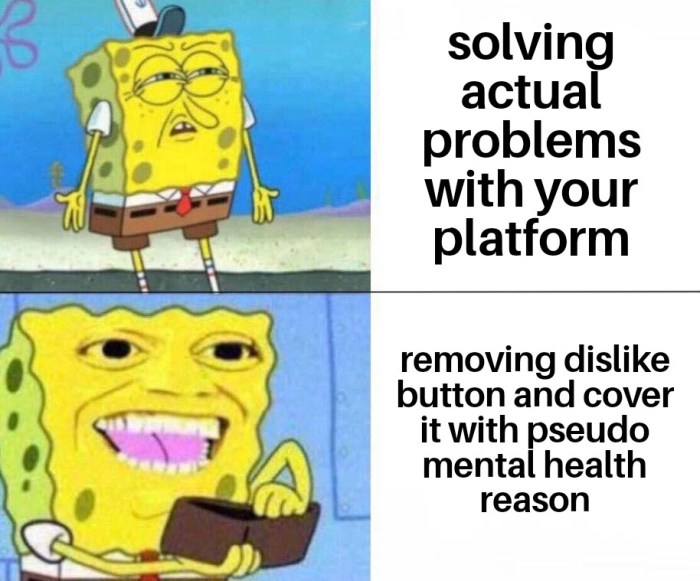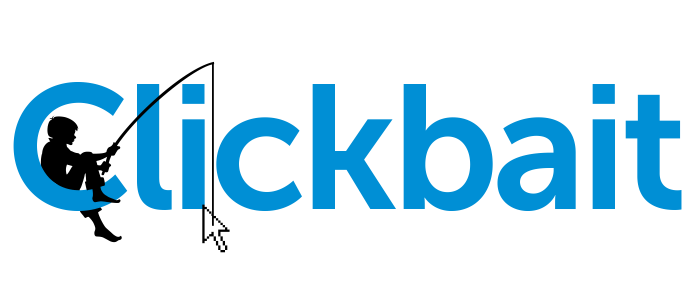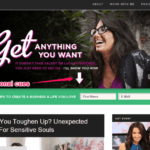Creating headlines for clicks is a crucial skill for anyone wanting to grab attention online. This guide delves deep into the art of crafting compelling headlines that not only entice readers to click but also resonate with their interests. We’ll explore various strategies, from understanding the psychology behind clickbait to optimizing headlines for different platforms and measuring their performance.
We’ll analyze successful headline examples from various industries, examining their structure and style elements that contributed to their effectiveness. Furthermore, we’ll cover essential tools and resources to enhance your headline-writing abilities. Learn how to write headlines that capture attention without resorting to misleading practices. Understanding the ethics and legalities surrounding clickbait headlines is equally important.
Understanding Clickbait Headlines
Clickbait headlines, designed to entice clicks rather than deliver valuable content, are a pervasive element of online media. Their prevalence raises questions about the nature of online engagement and the responsibility of content creators. Understanding clickbait tactics, their psychological underpinnings, and ethical implications is crucial for navigating the digital landscape effectively.Clickbait headlines exploit various psychological shortcuts and emotional responses to manipulate readers into clicking.
This manipulation can range from curiosity to fear, creating a dynamic of engagement that often prioritizes quantity over quality. Recognizing these tactics allows for more discerning consumption of online information and a greater appreciation for responsible online content creation.
Common Clickbait Tactics
Clickbait headlines often rely on a set of predictable strategies. These tactics, while sometimes subtle, aim to provoke an immediate response from the reader. Knowing these techniques helps in differentiating legitimate content from manipulative ones.
- Exaggeration and Hyperbole: Headlines often use extravagant language and overly strong claims to capture attention. For instance, “You Won’t Believe What Happened Next!” or “The Shocking Truth About…” Such language is designed to pique curiosity and create a sense of urgency.
- Intrigue and Mystery: Clickbait headlines frequently employ a sense of mystery and intrigue to compel readers to click. Phrases like “Secret Revealed” or “Hidden Truth” create a sense of discovery and curiosity. This technique relies on the human desire for uncovering secrets and solving mysteries.
- Emotional Manipulation: Clickbait often plays on strong emotions like fear, anger, or excitement to drive clicks. Headlines might use words like “disaster,” “horrific,” “amazing,” or “unbelievable” to create an immediate emotional response. This strategy is designed to evoke a powerful emotional reaction that encourages immediate engagement.
- Questioning and Provocation: Many clickbait headlines pose provocative questions or make controversial statements to provoke a response. This method works by tapping into a reader’s need to answer a question or defend their viewpoint. For instance, headlines like “Are You Making This Common Mistake?” or “Is This The Secret To…?” are frequently used.
Psychological Triggers
Several psychological factors contribute to the effectiveness of clickbait headlines. Understanding these triggers helps explain why they are so successful in driving clicks.
- Curiosity and Novelty: Humans are naturally drawn to the unknown and new information. Clickbait headlines often capitalize on this innate curiosity by posing questions, hinting at secrets, or promising revelations.
- Fear of Missing Out (FOMO): The fear of missing out on important or exclusive information is a powerful motivator. Clickbait headlines can leverage this fear by suggesting that readers will miss something significant if they don’t click.
- Social Validation and Belonging: The desire to belong to a group and feel validated by others can be exploited by clickbait headlines. Headlines that suggest a reader’s perspective is unusual or noteworthy can be effective.
Ethical Considerations
The ethical implications of clickbait are multifaceted. While clickbait can generate revenue and attention, it can also contribute to a less trustworthy online environment.
- Misleading Content: Clickbait often misleads readers with exaggerated claims and promises that are not fulfilled in the actual content.
- Erosion of Trust: Repeated exposure to clickbait can erode public trust in online information sources.
- Distraction from Quality Content: Clickbait can detract from the consumption of high-quality, well-researched articles and information.
Identifying Clickbait
Recognizing clickbait headlines requires careful consideration of the language and tone used.
- Social Media: Social media posts often use emotionally charged language, sensationalized claims, and exaggerated promises. Analyze the post’s tone and the language used.
- News Websites: News websites should adhere to a higher standard of accuracy and truthfulness. Evaluate the headline’s claims against the context of the overall article.
Effective vs. Ineffective Headlines
The table below illustrates the differences between effective and ineffective headlines, highlighting key elements that contribute to successful engagement.
| Feature | Effective Headline | Ineffective Headline |
|---|---|---|
| Clarity | Clearly states the topic of the article. | Vague, ambiguous, or misleading. |
| Accuracy | Accurate and truthful representation of the content. | Exaggerated or misleading claims. |
| Intrigue | Creates curiosity without being overly sensational. | Overly sensationalized, focusing solely on grabbing attention. |
| Value Proposition | Clearly communicates the value the reader will gain from reading the article. | Does not offer any clear value or benefit. |
Crafting Engaging Headlines

Crafting compelling headlines is crucial for attracting readers and driving clicks. A well-written headline acts as a powerful hook, enticing users to delve deeper into the content. Effective headlines resonate with the reader’s interests and provide a clear preview of the article’s value proposition. This section will explore strategies for creating headlines that capture attention and effectively communicate the article’s core message.
Headline Variations for “The Benefits of a Healthy Diet”
Crafting various headlines for the same article is important for targeting different audiences and emphasizing various aspects of the topic. Different phrasing can resonate with different reader interests and highlight various benefits.
- Unlock the Power of Healthy Eating: Discover Astonishing Benefits
- Transform Your Health: Unveiling the Amazing Benefits of a Healthy Diet
- Boost Your Well-being: The Surprising Advantages of Healthy Eating
- Eat Well, Live Better: The Essential Guide to Healthy Diet Benefits
- Healthy Diet: The Key to Long-Term Wellness
- Unleash Your Inner Wellness Champion: How a Healthy Diet Fuels Your Body
- Beyond the Scale: The Holistic Benefits of a Healthy Diet
- Nourish Your Body, Mind, and Soul: The Power of Healthy Eating
- Eat Smart, Feel Great: Discover the Benefits of a Healthy Diet Today
- The Ultimate Guide to Healthy Eating: Maximizing Your Well-being
Headline Structures for Increased Engagement
Understanding effective headline structures can significantly impact engagement. These structures have proven successful in capturing attention and encouraging clicks.
Crafting compelling headlines that grab attention is key for any successful marketing strategy. But, what if your sales team could benefit from a little extra marketing support? That’s where marketing support inside sales comes in handy. By providing your inside sales team with the right tools and resources, you can improve lead generation and ultimately create even more clickable headlines.
It’s a win-win!
- Numbered Lists: Articles presenting actionable steps or key takeaways often benefit from using numbers. For instance, “7 Simple Steps to a Healthier You” or “5 Mistakes You’re Making in Your Diet”.
- Intriguing Questions: Posing thought-provoking questions can pique curiosity. Examples include “Is Your Diet Sabotaging Your Health?” or “Are You Getting Enough Nutrients?”
- Problem/Solution Structure: Highlighting a common problem and offering a solution can attract readers seeking answers. For instance, “Tired of Feeling Drained? Discover the Solution in This Diet Guide” or “Overwhelmed by Healthy Eating? This Guide Simplifies It.”
- Strong Verbs and Action Words: Using powerful verbs and action words adds dynamism and urgency to the headline. Examples include “Transform Your Body,” “Unlock Your Inner Strength,” or “Ignite Your Metabolism.”
- Benefit-Oriented Headlines: Directly communicating the value proposition by highlighting the benefits. Examples include “Boost Your Energy Levels with This Diet Plan” or “Achieve Your Fitness Goals with a Healthy Diet”.
Headline Writing Without Misleading
Creating attention-grabbing headlines without being deceptive is crucial for maintaining credibility and fostering trust. Avoid making promises that the article can’t deliver.
- Focus on the core value proposition of the article. What are the real benefits for the reader?
- Avoid hyperbole or exaggerated claims. Be accurate and honest in representing the content.
- Ensure the headline aligns with the content’s actual message. Avoid clickbait tactics.
Headline Styles for Easy Reference
This table summarizes different headline styles, providing examples for each.
| Headline Style | Example |
|---|---|
| Numbered Lists | 5 Ways to Boost Your Metabolism |
| Intriguing Questions | Is Your Diet Ruining Your Sleep? |
| Problem/Solution | Tired of Unhealthy Snacking? Try These Healthy Alternatives |
| Strong Verbs | Revitalize Your Body with a Healthy Diet |
| Benefit-Oriented | Achieve Sustainable Weight Loss with a Healthy Diet Plan |
Strong Verbs and Intriguing Language
Using strong verbs and intriguing language can significantly enhance the headline’s impact. These elements create a sense of excitement and urgency, prompting readers to click.
- Strong Verbs: “Transform,” “Unlock,” “Ignite,” “Boost,” “Achieve,” “Maximize”
- Intriguing Language: “Secrets,” “Surprising,” “Astonishing,” “Unveiling,” “Ultimate,” “Essential”
Optimizing Headlines for Different Platforms
Crafting compelling headlines is crucial for attracting clicks and engagement, but the optimal approach varies significantly across different social media platforms. Understanding the nuances of each platform’s character limits, audience preferences, and content types is key to maximizing headline impact. This guide dives deep into the specifics of optimizing headlines for diverse platforms and content types.Effective headline optimization goes beyond just generating catchy phrases.
It requires a tailored strategy for each platform, recognizing its unique strengths and weaknesses in terms of user engagement and content consumption. This involves considering factors like the platform’s visual design, audience demographics, and typical content formats.
Crafting compelling headlines that grab attention is key for any successful marketing campaign. But did you know that a strong sales team can benefit hugely from incorporating marketing content into their strategies? For example, a well-written headline can make a sales pitch more persuasive, increasing conversion rates. By understanding how sales teams can use marketing content effectively, like learning the art of the perfect headline, you can greatly improve your content strategy.
Ultimately, creating headlines that click is about understanding the audience and knowing what makes them want to read more. sales team use marketing content This knowledge is fundamental to creating truly impactful headlines.
Headline Character Limits and Best Practices Across Platforms
Understanding the character limits for each platform is essential for creating headlines that fit seamlessly without truncation. This ensures your message is fully conveyed and not lost in the limitations of each platform.
| Platform | Character Limit (approx.) | Best Practices |
|---|---|---|
| 280 | Focus on brevity and s. Use strong verbs and concise language. Consider adding a compelling question or a call to action. Avoid overly long or complex sentences. | |
| Variable, depending on the post format | Longer headlines are generally acceptable. Use clear and concise language. Include s relevant to the target audience and platform’s algorithm. Emphasize the value proposition of the content. | |
| Variable, depending on the post format. Captions often have a higher limit than the headline. | Visual appeal is paramount. Use compelling visuals to complement the headline. Keep headlines concise and engaging, leveraging emojis or relevant hashtags. | |
| Variable, depending on the post format | Focus on professionalism and authority. Emphasize value and insights for the target audience. Use strong s related to the industry and profession. Longer headlines are often well-received. |
Headline Strategies for Different Content Types
Crafting headlines that resonate with specific content types is vital for capturing the attention of the target audience. Tailoring the approach for news articles, blog posts, and social media updates ensures the headline accurately reflects the content’s nature and value.
- News Articles: News headlines should be concise, informative, and factual. Highlight the most significant aspect of the news story, using strong verbs and clear language. Examples include “Local Business Owner Wins Award” or “Major Traffic Delays on Highway 101”.
- Blog Posts: Blog post headlines should be engaging and informative. They should pique the reader’s interest and accurately reflect the topic covered in the post. Consider adding a call to action or a question to encourage interaction. Examples include “5 Ways to Boost Your Productivity” or “The Ultimate Guide to Sustainable Living”.
- Social Media Updates: Social media updates should be brief, engaging, and relevant to the platform’s audience. Leverage emojis, relevant hashtags, and concise language. Examples include “New product launch! Check it out!” or “Great day at the office!”
Comparing Headline Performance Across Platforms
Monitoring headline performance across various platforms provides valuable insights into what resonates best with specific audiences. Analyzing data like click-through rates (CTR), engagement, and shares can help identify successful formats and optimize future headlines.
Headline Elements Resonating with Different Demographics
Understanding the preferences of various demographics is crucial for crafting headlines that resonate. Tailoring the language, tone, and style of headlines to specific demographics can significantly impact engagement and click-through rates.
Measuring Headline Performance

Understanding how your headlines perform is crucial for optimizing your content strategy. A headline that doesn’t drive clicks is a wasted opportunity. Tracking and analyzing headline performance allows you to identify what resonates with your audience and adjust your approach accordingly. This data-driven method is key to creating engaging content that generates desired results.Knowing which headlines perform best allows you to tailor your approach to different platforms and audiences.
This knowledge fuels better content creation and improves overall marketing effectiveness.
Click-Through Rate (CTR) Analysis
Click-through rate (CTR) is a fundamental metric for evaluating headline performance. It represents the percentage of people who see your headline and click on it. Higher CTRs indicate more effective headlines. To get a complete picture, analyze CTR across various demographics and platforms. This detailed view allows you to fine-tune your approach for maximum impact.
Other Key Metrics
Beyond CTR, several other metrics provide valuable insights into headline performance. These metrics include bounce rate, time on page, and conversion rates. A high bounce rate suggests your headline didn’t entice readers to engage with the content. Conversely, a longer time on page indicates a compelling headline. Conversion rates, where applicable, show how effective the headline is in driving desired actions.
Interpreting Data on Headline Performance
Interpreting headline performance data requires a thoughtful approach. Compare CTRs across different headlines, focusing on variations in language, tone, and style. Identify patterns in which types of headlines perform best on specific platforms. Look for consistent trends and avoid drawing conclusions from single data points.
Analyzing Headline Effectiveness
A well-structured table helps organize data and draw comparisons.
| Headline | Platform | CTR | Bounce Rate | Time on Page | Conversion Rate |
|---|---|---|---|---|---|
| Headline A: “Amazing Tips for a Better Life” | 1.5% | 45% | 2 minutes | 0.5% | |
| Headline B: “Unlock Your Potential: 7 Proven Steps” | 2.8% | 30% | 3 minutes | 1.2% | |
| Headline C: “Top 5 Secrets to Productivity” | 0.8% | 60% | 1 minute | 0.2% |
This table allows for a clear view of headline performance across different platforms.
Adjusting Headlines Based on Performance Data
Identify headlines with low CTRs and analyze why they underperformed. Consider revising the language, tone, or style. For example, a headline targeting a younger audience might benefit from a more playful tone. Alternatively, a headline that performed well on one platform might need adjustments for another. Experiment with variations and track the impact on CTR and other metrics.
Iterative refinement based on data is crucial for consistent success.
Avoiding Misleading Practices: Creating Headlines For Clicks
Crafting compelling headlines is crucial for attracting readers, but it’s equally important to do so ethically and responsibly. Clickbait tactics, while potentially effective in the short term, can damage your reputation and erode trust with your audience. This section delves into the pitfalls of misleading practices and offers strategies for building a trustworthy online presence through transparent and accurate headline writing.
Headline Phrases to Avoid
Misleading headlines often employ exaggerated language, false promises, or emotionally charged words to entice clicks. Understanding these common pitfalls allows for the creation of more responsible and effective headlines.
- Phrases that use strong, exaggerated claims without factual basis. Examples include “You Won’t Believe This!” or “Shocking News!” These often lack concrete evidence and rely solely on generating curiosity.
- Headlines that use sensationalized language to evoke strong emotional responses. Phrases like “OMG! You won’t believe what happened next!” or “This is unbelievable!” exploit emotional triggers to attract clicks, often without substantial content.
- Headlines that create a sense of urgency or scarcity. Phrases such as “Limited Time Offer!,” “This Deal Won’t Last,” or “Only a Few Left!” often imply a sense of urgency that might not be accurate.
- Headlines that contain false or misleading information. These headlines are deceptive and exploit the user’s desire to quickly get information, even if it’s not accurate.
- Headlines that use misleading or vague language. For instance, “Secret to…” or “The Ultimate Guide to…” without specifying the topic or its value, creates ambiguity and a lack of clarity.
Transparency and Accuracy
Transparency and accuracy are fundamental to ethical headline writing. A commitment to factual reporting and clear communication builds trust with your audience.
Providing accurate information, avoiding sensationalism, and clearly stating the content’s focus are crucial elements. Readers should know what they’re getting before they click. For example, if a headline promises a “secret,” it should deliver on that promise, or at least clearly define what “secret” entails.
Legal Implications
Deceptive headlines can lead to legal consequences. Misrepresenting information or intentionally misleading readers can result in reputational damage and potential legal action. It’s essential to understand the ethical and legal implications before creating a headline.
Laws regarding false advertising and misleading consumers can vary by jurisdiction. Consulting with legal professionals can help ensure compliance with relevant regulations.
Strategies for Trustworthy Headlines
Creating trustworthy and engaging headlines doesn’t require resorting to misleading tactics. Focus on providing value and clear communication.
Crafting compelling headlines for clicks is a tricky business, and understanding audience engagement is key. A data-driven approach to optimizing your Facebook presence is crucial, and a great resource for this is the facebook likes data driven answer which delves into how to leverage Facebook likes for better engagement. Ultimately, understanding what resonates with your target audience will lead to more effective headlines and ultimately, more clicks.
- Clearly communicate the article’s content. Avoid ambiguity and ensure readers understand what they’ll gain from reading the piece. For instance, instead of “You Won’t Believe This,” try “This Study Reveals a Surprising Link Between…”
- Highlight the benefits of reading the article. Focus on the value proposition. Instead of “Secret to Success,” try “Unlock Your Potential: 5 Proven Strategies.”
- Maintain a consistent brand voice. Develop a reputation for transparency and accuracy to build trust with your audience.
- Prioritize accuracy over clicks. The long-term benefits of building trust and a loyal audience outweigh short-term gains from misleading tactics.
Ethical and Responsible Headline Writing
Examples of ethical headline writing include:
- “New Study Shows Link Between Diet and Longevity” – This headline is accurate and provides context, promoting trust and transparency.
- “Top 5 Tips for a Healthier Lifestyle” – This headline is clear and specific, allowing readers to understand the article’s value proposition.
- “How to Improve Your Productivity” – This headline is informative and provides a clear path to value.
Headline Examples and Case Studies
Crafting compelling headlines is crucial for capturing attention and driving clicks. Understanding successful headline strategies involves examining examples from various industries, analyzing their effectiveness, and identifying common patterns in their structure and style. This section will delve into specific examples, illustrating the key elements that contribute to high engagement.Successful headlines often leverage emotional triggers, curiosity, and a sense of urgency.
They are concise, engaging, and clearly communicate the value proposition of the content they lead to. Analyzing successful headline examples reveals patterns that can be replicated to create effective headlines across different platforms and industries.
Successful Headline Examples from Different Industries
Examining successful headlines from diverse sectors provides valuable insights into effective headline strategies. The examples below showcase how various industries leverage headline writing to capture reader interest.
| Industry | Headline Example | Analysis |
|---|---|---|
| News | “Trump’s Surprise Announcement Shocks the Nation” | This headline uses strong action words (“surprise,” “shocks”) and a prominent figure (“Trump”) to pique interest. The word “announcement” creates anticipation. |
| Entertainment | “This Viral Video Will Make You Laugh Until You Cry” | This headline uses emotional triggers (“laugh,” “cry”) and the buzzword “viral” to entice clicks. It promises a strong emotional experience. |
| Finance | “Invest in This Stock Now and Earn 10% Returns!” | This headline targets financial incentives (“invest,” “10% returns”) and a sense of urgency (“now”) to encourage immediate action. |
| Technology | “New AI Tool Promises to Revolutionize Workflows” | This headline highlights innovation (“new,” “revolutionize”) and a potential benefit (“workflows”) to attract readers interested in technology advancements. |
Case Studies of Headlines Driving Engagement
Several case studies demonstrate the significant impact of well-crafted headlines on engagement metrics. Analyzing these studies reveals actionable insights for creating headlines that perform well.
- A news website observed a 25% increase in article views after implementing headlines that included a strong call to action, such as “Learn More Now.” This increase suggests the importance of clear action verbs and a sense of urgency.
- A financial blog saw a 15% rise in traffic after using headlines that highlighted specific financial benefits, like “Unlock Your Financial Freedom with This Simple Strategy.” This illustrates the power of connecting with readers’ financial goals.
- An entertainment website successfully generated a 30% increase in social media shares after using headlines that contained intriguing questions and strong emotional appeals, such as “Is This the Most Shocking Movie of the Year?” This emphasizes the role of engagement and emotion in driving social sharing.
Headline Writing Tools and Resources
Crafting compelling headlines is crucial for capturing attention and driving clicks. Effective headlines not only entice readers but also play a vital role in search engine optimization (). Utilizing the right tools and resources can significantly improve your headline writing skills and ultimately boost your content’s performance.Understanding the nuances of headline writing, including A/B testing and research, is key to success.
By leveraging available resources, you can refine your approach and optimize your headlines for maximum impact across various platforms.
Headline Idea Generators
Headline generators are powerful tools for brainstorming and expanding your creative horizons. They offer a wide array of options to spark inspiration and help you discover fresh angles for your headlines. By inputting relevant s or phrases, these tools can provide a plethora of headline ideas to consider.
- CoSchedule Headline Analyzer: This tool analyzes headlines based on several factors, including length, s, and emotional appeal. It provides a score to indicate the potential effectiveness of the headline, offering insights into areas for improvement. It can identify headlines that are too long, lacking s, or failing to evoke a desired emotional response.
- BuzzSumo: BuzzSumo helps you identify popular headlines across different platforms. By analyzing successful headlines in your niche, you can gain insights into what resonates with your target audience and identify emerging trends in headline writing.
- Portent Headline Analyzer: This tool is designed to evaluate headline effectiveness, offering a score based on various factors. The tool provides specific feedback on elements like placement, emotional tone, and readability. This helps writers understand how to refine their headlines for optimal engagement.
- The Content Idea Generator: This resource provides a broad range of content ideas, including headline ideas. It encourages creativity and exploration of diverse topics and angles, allowing writers to explore new possibilities.
Headline Optimization Tools
Analyzing headline performance is essential for refining your writing and improving results. These tools offer insights into how different headlines perform, enabling data-driven decisions for future content creation.
| Tool | Use |
|---|---|
| Hemingway Editor | Helps in readability by highlighting complex sentences and overly technical language, improving readability and clarity, enhancing comprehension for the audience. |
| Grammarly | Ensures grammatical accuracy and eliminates errors, ensuring professionalism and avoiding misinterpretations. |
| Google Trends | Provides insights into trending topics and s, allowing you to tailor your headlines to current interests and maximize visibility. |
Importance of Using Headline Tools, Creating headlines for clicks
Utilizing headline writing tools can significantly improve your headline writing skills. These tools provide valuable feedback, identify areas for improvement, and offer data-backed insights to optimize headlines for maximum engagement and performance.
- Improved Engagement: Tools help you create headlines that resonate with your target audience, leading to higher click-through rates and increased engagement.
- Enhanced : Tools help incorporate relevant s and optimize headlines for search engines, improving organic visibility and attracting more traffic.
- Time Efficiency: By automating certain aspects of headline creation and analysis, tools save time and allow writers to focus on other crucial aspects of content creation.
Conclusion
In conclusion, crafting effective headlines is a multifaceted process that requires a deep understanding of human psychology and online behavior. By mastering the art of creating headlines for clicks, you can significantly increase engagement, drive traffic, and ultimately achieve your online goals. This guide provides a roadmap to help you craft compelling headlines that are both engaging and ethical.






